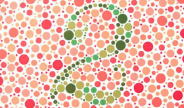
This paper describes a colour image enhancement method for those having colour-vision deficiencies. The proposed method can be divided into 3 stages. Firstly, a conversion relation between the wavelength shift (measured in nanometers) of a colour deficient observer (CDO) and the severity of colour deficiency was established. Secondly, the perceived colour gamut was built by applying the conversion relation. Finally, the original images were re-coloured by adopting a gamut mapping algorithm to map colours from the gamut of colour normal observer (CNO) to that of a CDO. Psychophysical experiments were then conducted to show the effectiveness of the method.

A gamut compression algorithm (GCA) and a gamut extension algorithm (GEA) were proposed based on the concept of vividness. Their performance was further investigated via two psychological experiments together with some other commonly used gamut mapping algorithms (GMAs). In addition, difference uniform colour spaces (UCSs) were also evaluated in the experiments including CIELAB, CAM02-UCS and a newly proposed UCS, Jzazbz. Present results showed that the new GCA and GEA outperformed all the other GMAs and the Jzazbz was a promising UCS in the field of gamut mapping.

FM halftoning is increasingly popular with traditional analog offset lithographic printing processes. There is a desire to offer this capability with digital presses based on electrophotographic printing (EP) technologies. However, the inherent instability of the EP process challenges the achievement of satisfactory print quality with dispersed-dot, aperiodic halftoning. The direct binary search (DBS) algorithm is widely considered to represent the gold standard of dispersed-dot, aperiodic halftone image quality. In this paper, we continue our previous efforts to adapt DBS to use with the Indigo liquid EP printing technology. We describe a complete color management pipeline for halftoning with a PARAWACS matrix designed using DBS. For the first time, we show actual printed patches obtained using our process. Our gamut mapping is performed in the YyCxCz color space, and is image-dependent. It incorporates several stages of alignment between the input and output spaces, as well as several stages of compression. After the gamut mapping, we tessellate the output color space into six global tetrahedra that each share the neutral axis, as an edge. Then, we determine the Neugebauer Primary Area Coverage (NPAC) for each pixel in the image to be printed by tetrahedral interpolation from the four nearest neighbors in the inverse printer mapping table. These four nearest neighbors are chosen so that only four Neugebauer primaries are used to render each pixel.